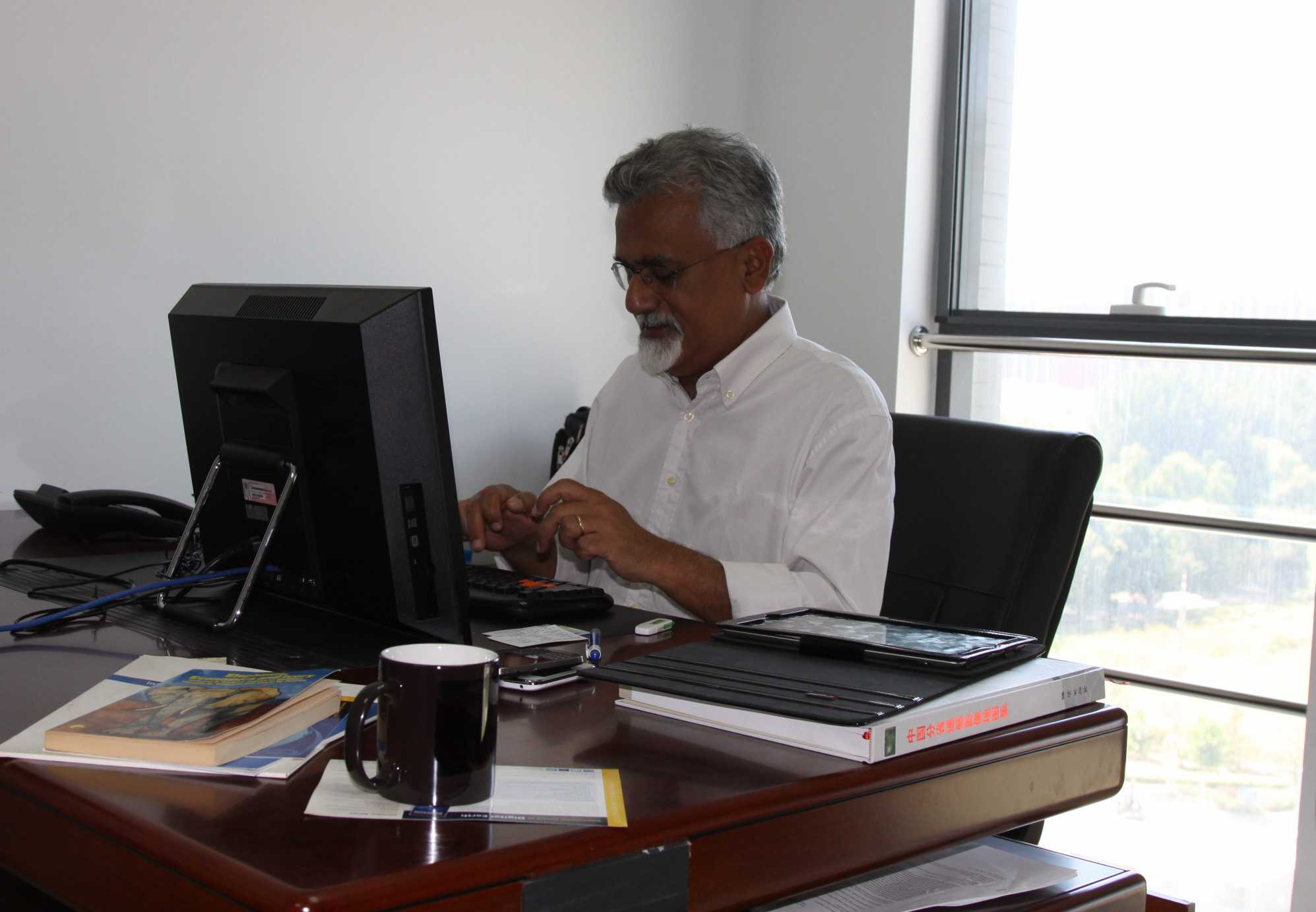At the age of 60,
Natarajan Ishwaran is a well-known figure in the international conservation
community- he has 30 years of experience in teaching and research in and
building international partnerships for environment, conservation and
sustainable development.
And he served as director of the Division of
Ecological and Earth Sciences of the United Nations Educational, Scientific and
Cultural Organization until July 31, when he decided it was time for a change
of direction.
Instead of sitting in an office and giving
instructions to UNESCO staff members, he will now work at the grassroots at
China's World Heritage sites and biosphere reserves, to influence changes that
simultaneously help people's lives and the environment.
"In the immediate past, when I was a
UNESCO director, I more often saw things from above, and had less chance to go
to specific places to talk to local inhabitants, industry owners, NGOs, and to
see what was happening there.
"Now I am going back to my past before
I was the director, when my work was more directly connected to moving things
on the ground," Ishwaran said.
Ishwaran is taking part in a
government-funded program for foreign experts, which plans to recruit 500 to
1,000 high-end non-Chinese foreign professionals from outside China over the
next 10 years to help spur innovation, and promote scientific research and
international partnerships.
Each expert will be sponsored for three
years' research in China, and Ishwaran is one of the first batch of 40 foreign
experts who are already in the country.
"It is not difficult to have new ideas,
but it is difficult to convert your idea into on the ground practices that can
help both people and the environment. And China is such a good place to test my
ideas," he said.
Ishwaran said he chose to come to China as
it has numerous wildlife and heritage sites, an effective system to translate
policy into on-the-ground action, and there are many sites and the necessary
human and technical resources to experiment with improvements. .
Ishwaran recalled a story about China. In
1990 Huangshan Mountain in eastern China was included on the World Heritage
List, but tourism increased too much in the following years, so UNESCO advised
the local government to regulate the development of tourism in the area.
After consultation with UNESCO, the
authorities decided to shift all tourism infrastructure development to areas
outside of the World Heritage site. China and UNESCO also cooperated to
implement training and other activities to strengthen employees' skills at the
site.
"This is one of the best managed World
Heritage areas for tourism. And the local government undertook actions it had
to and which often would be very difficult in many other countries,"
Ishwaran said.
"China is so large and there are so
many differences, and that is why we have to get down to the specific places to
make changes taking place gradually," he added.
Hong Tianhua, deputy director of the
International Center on Space Technologies for Natural and Cultural Heritage
under the Auspices of UNESCO, and Ishwaran's partner in the China program, said
he will be of great help to the center's development.
"Ishwaran was an UNESCO director and
has an extensive network in the international community, so he can surely help
increase the visibility of our space technologies center.
"Also, the purpose of the government's
foreign experts program, include importing first-class managerial talents from
abroad, is to help us upgrade our own scientific research management, and
Ishwaran is such a person," Hong said.
Having just arrived in China, Ishwaran is
not yet able to tell how he will spend the next three years in China, though he
plans to first use two months to choose a site to start with.
"I hope more young people in China will
participate in the program, and that the project will last more than three
years. I hope it to continue with or without me.
"Amid the slowdown of the global
economy, environmentally friendly technologies may become a future direction.
"And science has a lot to do to make
people visualize alternative futures; remote sensing technologies in particular
can help scientists and planners to jointly construct land use and conservation
scenarios for the future that are sustainable."

